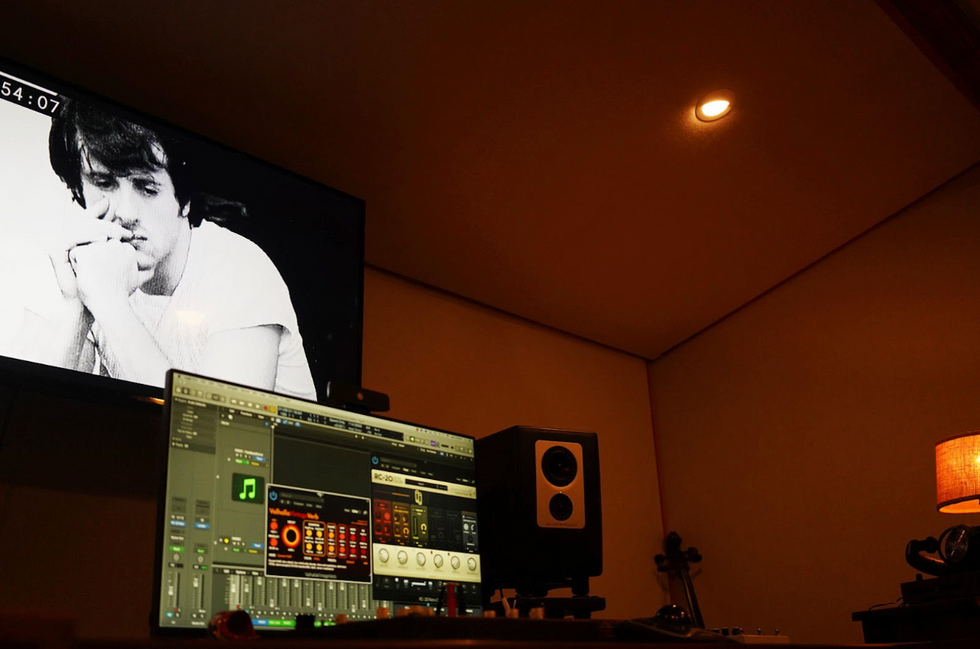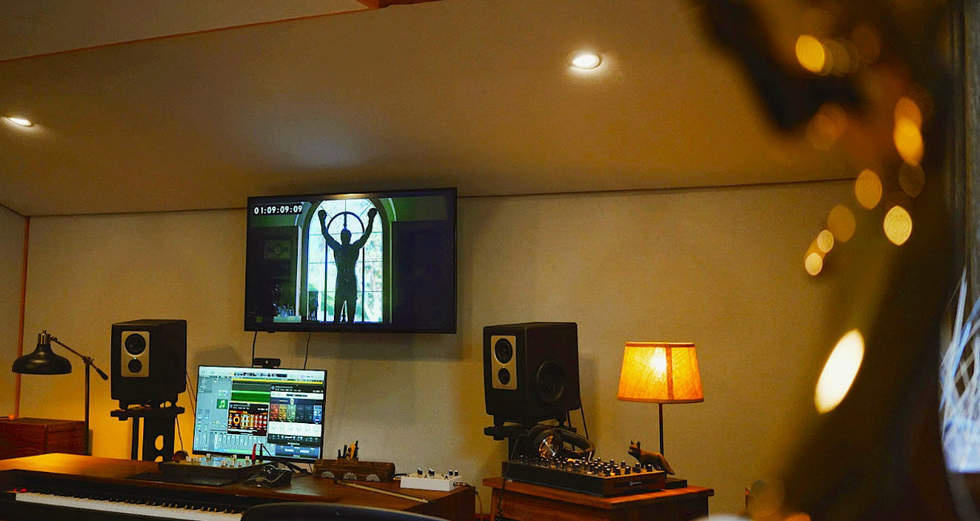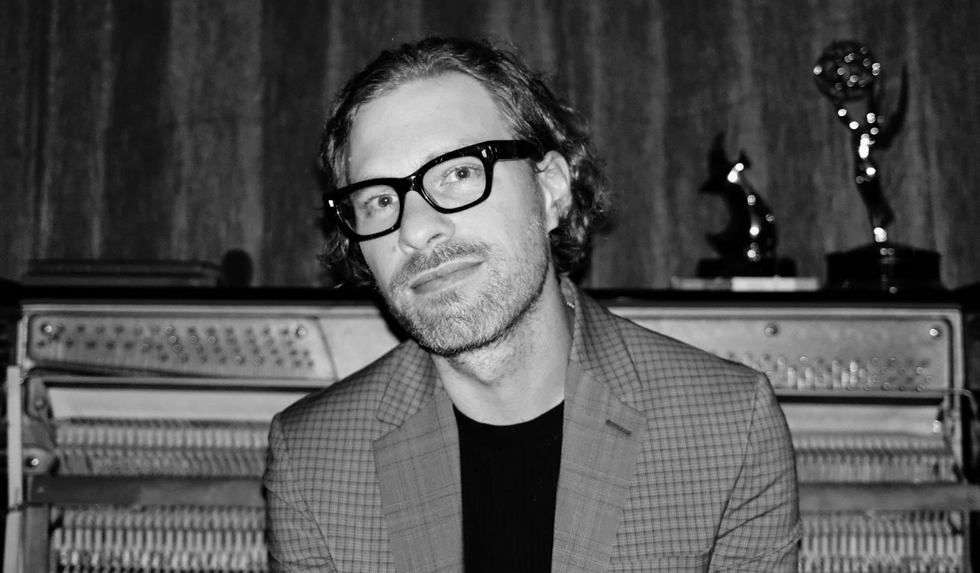
Written By Tyler Strickland
It’s hard to think about Hollywood action hero and movie icon, Sylvester Stallone, without immediately hearing the Rocky theme in your head. For nearly 50 years, Stallone has been synonymous with the legendary movie icons he has embodied, as well as their musical scores. In this op-ed, I will dive into my creative process behind scoring the Netflix documentary SLY, and how I used the music in the film to get to the man behind the icon.
I have been scoring documentary films for over the past 10 years, a genre that requires a slightly different approach with the music. There is an extra layer of trust needed when working in the documentary space. Documentary filmmakers have been entrusted by the subjects in the film to tell their story in the most authentic way possible, and that responsibility really does extend to the composer. It’s so important to understand the director’s vision and to make sure the tone of the editing and music are in harmony with each other to capture an honest portrait of the film’s subject.
Sly | Sylvester Stallone Documentary | Official Trailer | Netflix
www.youtube.com
Our director of SLY, Thom Zimny, has made several films about iconic pop stars and he has an incredible ability to see beyond the veil of their public persona, and lean into the individual behind the art. In early conversations with Thom, it immediately became obvious to me that he wasn’t making a film about Stallone’s entire career, he was making a film about the man behind it; what makes him tick as an artist, a writer, and a family man. It’s about what got Sly into this career, and what’s most important to him now.
When Thom approached me about scoring the film, he and I spoke about how it was a challenge finding the right musical tone for Sly, because on the surface he’s this tough guy, but with a big heart. Right away, I knew that audiences who were tuning in, expecting the machismo of ‘Rocky Balboa,’ would be surprised by the polarity of Sly’s interior world. I knew that the score would serve to express the many multitudes present in the man and the icon, Sylvester Stallone. So we immediately started looking at instrumentation that would work with Sly.
 Tyler Strickland workplace for SlyTyler Strickland
Tyler Strickland workplace for SlyTyler Strickland
The first order of business was to establish some themes in the score. I do like to use deliberate melodies and chord progressions for specific character themes in many projects, but sometimes simply creating a “bucket” of instruments or unique sounds and forcing myself to stay and create within them is just as effective. I’m talking about selecting two or three instruments to use exclusively, writing cues with only those instruments. With SLY, I created three “buckets.” The first covered everything specific to his career journey, like writing (and rewriting) Rocky, casting Rocky, coming up with the idea for The Expendables, etc. These scenes tend to be more high energy and driven by rock music elements; some live drums, electric guitar, harmonica, etc.
Since much of Sly’s youth and early career milestones happened in the 80’s, I wanted to draw from that era a little bit for the first “bucket”. So much of the score was composed using an old electric Wurlitzer piano. It’s an instrument that has a lot of versatility; it can be beautiful when playing chords softly with some vibrato, and with a little distortion added while attacking the keys a bit harder, it can quickly take on an aggressive tone. I used this all over the film with some of the more energetic cues, like when he’s moving from NYC to LA to meet up with Henry Winkler. That cue is one of my favorite moments from the film (on the soundtrack album it’s titled “Drive To Hollywood”), and it features some incredible harmonica work from Mickey Raphael who has been Willie Nelson’s harmonica player for the past 50 years. This was incredibly fun for me because I come from a songwriting and touring background as a guitarist, so it was great to put the songwriting hat back on for a moment.
 Tyler Strickland’s scoring spaceTyler Strickland
Tyler Strickland’s scoring spaceTyler Strickland
I created a second bucket that was much more atmospheric, ethereal, and inspiring. I tapped into these sounds for any scenes where he was speaking more about his life journey: why these characters he created and his family meant so much to him. This is where we used strings, and a lot of felt piano for a gentle approach.
The third “bucket” was created to express Sly’s troubled relationship with his father, which thematically was always linked to some kind of distortion sound in the score, and became a great tool with the storytelling. You’ll notice anytime in the film where he talks about his father, there is a reprised distortion tone to get to the root of the trauma he has from his childhood.
I’m very inspired by photography in my personal life, and must say that the way our cinematographer, Justin Kane, shot SLY was also very unique. Stallone is almost always interviewed while standing up, walking around in his house, or talking with his hands. He is always moving. It’s kind of a composer’s dream to have a subject like this because there’s a ton of kinetic energy on screen. He’s giving me all of these moments to accent with the score. Sly has ways of pausing to gather his thoughts, and the music needed to hang in limbo with him, and then he quickly rattles off an energetic idea, and the music follows. A lot of the film’s score reacts to his body language from his interviews.
 Tyler Strickland
Tyler Strickland
At a screening we had for the film, an audience member asked our producer, Braden Aftergood, what it was like working with Sly (because he produces all of his movies), and I loved his response so much I wanted to share it. Braden said working with Sly is both incredibly rewarding and challenging because he’s a guy who came from basically nothing and quickly became a heroic iron around the world.
So to Stallone, anything is possible and there is no challenge that cannot be overcome. This was really inspiring to me and I’m just very grateful to be a part of telling his story.
Author: Guest Author
This article comes from No Film School and can be read on the original site.
